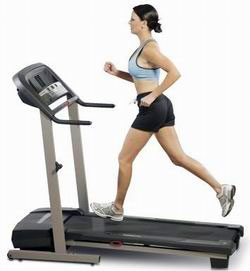Life is busy and often we don’t  have time for exercise. Although jogging became popular in the US in the 1970s, it is probably in the past 10 years that it has taken root in Budapest, with more people incorporating it into a daily activity. With more and more races in the city and the countryside it may be safe to say that running has become fashionable, with most big fashion brands getting their own running sport collections made. Running shoes and shorts are now as ubiquitous as swimsuits.
have time for exercise. Although jogging became popular in the US in the 1970s, it is probably in the past 10 years that it has taken root in Budapest, with more people incorporating it into a daily activity. With more and more races in the city and the countryside it may be safe to say that running has become fashionable, with most big fashion brands getting their own running sport collections made. Running shoes and shorts are now as ubiquitous as swimsuits.
The impact of running for our cardiovascular health is widely known, but what we didn’t know is the unintended consequences for our back and spine. As people nowadays are more sedentary, this tends to increase the frequency of back problems and many believe that running will improve the situation. Recently doctors concluded research and published their results.
 When scientists in Sweden scanned the spines of mice before and after spending several weeks running on treadmills, the researchers noticed significant increases in the size of the spinal discs of the mice. This seems to have indicated that those structures had been responding and adapting to the demands of running. Of course, mice, running on four legs rather than two, are clearly not people. It remains unclear whether running and similar activities are helpful or harmful for the human spine.
When scientists in Sweden scanned the spines of mice before and after spending several weeks running on treadmills, the researchers noticed significant increases in the size of the spinal discs of the mice. This seems to have indicated that those structures had been responding and adapting to the demands of running. Of course, mice, running on four legs rather than two, are clearly not people. It remains unclear whether running and similar activities are helpful or harmful for the human spine.
Eventually, the researchers recruited nearly 80 adult men and women, of whom two-thirds considered themselves active runners, some covering more than 50 km a week. These were designated as the “long-distance” group. A second group said they ran between 20 and 40 Km a week, all training for at least five years. The third group rarely exercised at all.
Then the researchers scanned everyone’s spines, using a sophisticated type of magnetic resonance imaging (MRI) to precisely measure the size and liquidity of each disc. Not surprisingly, differences were clear from the start. Typically, runners’ spinal discs were larger and contained more fluid than the discs of those who did little to no exercise.
Interestingly, scientists didn’t find major differences between the two groups of active runners. Researchers started to look for more information about the ideal level of running for disc health. They began digging deeper into their findings by examining accelerometer data that had been collected. Accelerometers measure movement in terms of acceleration forces, or how much power a body is generating to move.
Ten of their volunteers were asked to step onto treadmills. Sc ientists discovered that walking briskly at a pace of about 6.5 km/h is optimal for the health of spinal discs.
ientists discovered that walking briskly at a pace of about 6.5 km/h is optimal for the health of spinal discs.
“You can go running” for the sake of your back, researcher Dr. Belavy concluded, “but you don’t have to”. A brisk walk will also do the same job.
While the study does not tell us whether exercise might aid in treating existing disc problems, it does clearly show that the spine needs some exercise for optimal health.




